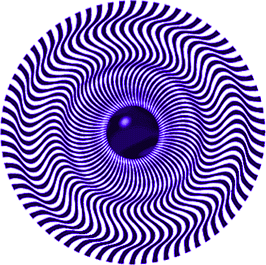

Automation
Imagine your home as a machine that is tuned to your individual lifestyle yet simultaneously focused on energy conservation. Intelligent automation is key to the practical realization of this vision. To achieve it, The Paradigm Grid blends innovative design with off the shelf components to create solutions that are as unique as they are cost effective. Our approach enhances the man/machine relationship at its most fundamental level: the roof over your family's head.Engineers at the Paradigm Grid can assist with:
- Lighting control and occupancy based automation
- Integrated HVAC systems
- Home theater and home audio
To find out how we can help implement your automation project, simply email our AI mail router at the address below. The correct resources will be notified. If you have one of our business cards, then feel free to use it for direct correspondence at the same email address.
Fortress: A Case Study
Fortress is a 1900 square foot ranch located in rural WI that features fully automated lighting and HVAC. All systems were designed and installed by engineers from The Paradigm Grid. Additional project challenges included using off-the-shelf automation components to reduce costs while still maintaining high reliability.The nerve center of the system is Advanced Quonset's Home Control Assistant software running on a low power atom based appliance. Currently X10, UPB, and Insteon power line protocols are handled by HCA which also directly receives sensor data over the air. Power line interfaces are provided by a SAI UPB PIM and a Smarthome Insteon 2413U. A WGL W800RF32 handles wireless X10. All three device interfaces are directly connected via USB to the HCA server itself.

Heating and Air Conditioning
TPG Engineers designed a cost effective and innovative "split plenum" HVAC system to separate the main living area from the sleeping area. To save energy with intelligent automation, inline duct fans located between the two supply plenums can increase airflow to the living areas during the day and the sleeping areas at night. This forms a two zone system that doesn't rely on spilling excess capacity or restricting airflow at the branch supply takeoffs. The design has the considerable additional advantage of increasing useable basement headroom by relocating the living area supply plenum next to the main support beam, a strategy that also balances supply takeoffs to the living areas. The result is a damper free solution that is controlled by active automation. Here's some shots showing this:
Shot of the plenum going into the furnace:

Shot of the two 8" ducts connecting the plenums with duct fans:

Shot of the UPB module that senses when the blower is running as well as whether the AC or the Furnace is active. HCA sets the global variables "AC Mode" and "Heating Mode" based on a sample that occurs when the blower motor activates. HCA makes the decision to turn on the duct fans based on the value of "House Sleeping". During the day, when Fortress is in AC mode, HCA ramps up the duct fans over time as the AC continues to run. This has the effect of increasing cooling to the living area during hot days.

Essentially, the two 8" ducts normally restrict airflow to the main living area which increases airflow to the sleeping area. When the fans kick in, the living area supply plenum is pressurized which increases airflow there and restricts airflow to the sleeping area. The relative effect can be precisely controlled by altering the speed of the duct fans.
Subsequent to the HVAC work, independent contractors converted half of the downstairs basement directly under the living area to an additional 400 square feet of living space through the addition of an office, library and sewing room there. Circular stairs that connect the Library to the family room directly above were installed in 2009. TPG specialists continued to work with the homeowner during this process to fine-tune HVAC. The result was an additional power duct system connecting the three rooms to circulate warm air generated by office computers and halogen track lighting. To eliminate noise, the automation system engages this system constantly at night. It is also energized during the day whenever the furnace blower is active and there's nobody in this area. If somebody enters and the system is running then the fans are shut down. X10 capable 240 Volt thermostats made by ISO-THERM (Canada) have also been installed in each of the three rooms for direct control of baseboard heating. These thermostats enable intelligent control over the setback settings in individual rooms. Interestingly, the baseboard system is rarely used since the R13 insulated area is warmed almost solely by circulated waste heat.
Shot of an ISO-THERM X10 thermostat

Lighting and General Automation Macros
Fortress is lit by UPB. All switches are the SAI US 11-30W model. Six lamp modules and three IO control modules round out the installation for a total of 42 UPB devices. Fortress also features 17 Ademco ceiling mount PIR sensors and 4 X10 wireless remotes which transmit wireless data to the central HCA system affectionately known by the homeowner's family as "Fortress Control". Fortress Control features 44 different macros designed by TPG engineers which control everything from the garage door to the outside sprinkler system. Two primary schedules (home and away) run the show. Family favorite macros include:
- A Shower sensor automatically controls the bathroom vent
fan eliminating that pesky steamed up mirror effect.
- the garage door is automatically closed if left open
when "go to bed" is pressed from the master bedroom. This macro also sets
"House Sleeping" and de-activates an "All lights" link to turn off all lights
in the house.
- the "All lights" UPB link can also be de-activated by a
double off tap from switches located near the doors.
- "Nighttime mode" is set by an outside ambient light sensor
or by turning on the family room lights. This activates automatic lighting.
- Automatic lighting is achieved by Ademco PIR motion sensors located
throughout the house. These in turn trigger lighting macros which activate
when "Nighttime mode" is set. For improved performance, all lighting macros
manually de-bounce the multiple triggers generated by Ademco
devices. Light-on is generally <.2 seconds from sensor trigger and feels
instantaneous. Light-off is generally 5 minutes after the last trigger was
detected. Lighting macros in the bathrooms and utility room are not subject to
"Nighttime mode" since these rooms are not well lit by ambient lighting during
the day. The main family rooms are not subject to sensor control unless "House
Sleeping" is active. Instead, lighting here is automatically activated by
"Nighttime mode"
- Turning off bedroom lighting with a switch automatically
deactivates motion sensing there. This effectively cancels automatic lighting
for the bedroom. Turning the lights back on with a switch reactivates motion
sensing.
- All motion sensors in the living areas of the house act
as intruder detectors when "House Sleeping" is active. Since all bedrooms are
at the end of a single hallway, a motion sensor there cancels this and
activates nighttime automatic lighting which is a more subdued lighting effect
in the main areas/bathrooms. 15 minutes after the last sensor trigger is seen,
"Intruder detect" mode is reactivated.
- Intruder detection turns on all lights in the affected
area as well as low level lighting in the master bedroom. Soon it will also
activate a wireless camera in the affected area connected to a monitor on the
bedside table.
- Away Mode is a programmed lighting schedule that can be selected from any wireless keypad as well as from over the Internet. Fortress continually adjusts the lighting behavior of the away mode schedule based on how lights are activated and de-activated during the day. Consequently, when the away mode schedule is selected and the house becomes vacant, lighting is "replayed" in a manner that perfectly mimics normal household activity. Unlike easily deduced timer solutions, the result is a vacant home that truly looks like it is still occupied.
Here's a shot of Fortress Control showing the first floor layout.

TPG engineers installed HCA v13.0 which also includes comprehensive remote connectivity from iPhone and Android devices.
Here's a shot of the main floor on the iPhone app:

Network
Fortress features an existing 802.11ac wireless network with 50Mb/s Internet connectivity that was leveraged for automation. The main router is a Netgear R7000. Several Cisco WES610Ns were also deployed to bridge to wired where required. There are laptops all over the house that can connect to servers/services hosted on the homeowner's VMware infrastructure well as to physical machines such as the business use PC in the homeowner's office.
Entertainment
The fully virtualized Fortress iTunes server is accessible via shared remote connections. Radmin server has been deployed on the iTunes VM for this purpose. This lets multiple devices share the same console session for simultaneous access to iTunes. Audio out goes to a Ramsey FM35WT 1 watt FM transmitter connected to a dipole antenna in the basement. Output signal strength has been tuned to legal limits for unlicensed operation. In spite of this, Fortress FM 88.3 can be picked up anywhere on the grounds. The transmitter itself is activated by Fortress Control when the Family room stereo system is turned on. When the homeowner is entertaining guests, the family simply connects all laptops to the iTunes server then tunes all radios to 88.3 FM.
Virtualization of the iTunes server onto the homeowner's local server that was running a VMware Hypervisor proved challenging given VMware's lack of sound card support. The solution to this problem was a Belkin F5L009 network USB hub and an Andrea Electronics Pure Audio USB-SA USB audio card. This audio device has been rated best in class by several independent reviewers.
In short, the Belkin hub acts as a network connected USB hub whose ports are remapped to the iTunes media server VM. The Pure Audio USB audio card provides a sound solution that works around VMware's lack of virtual sound drivers. iPODs can also be synced by plugging them into additional ports on the Belkin hub. The FM transmitter is plugged into the audio output of the Pure Audio device.
